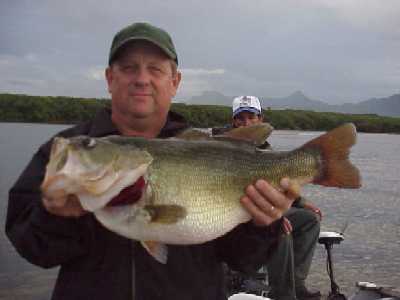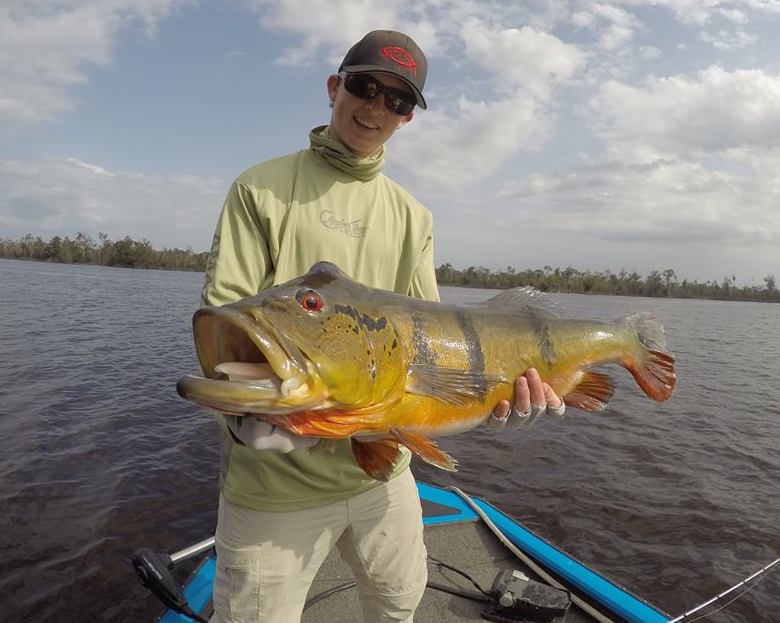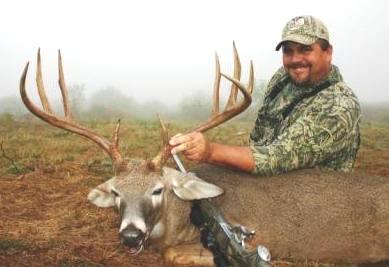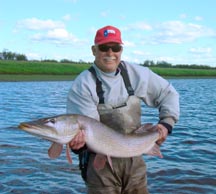Costa Rica Rio Parismina Lodge Fishing
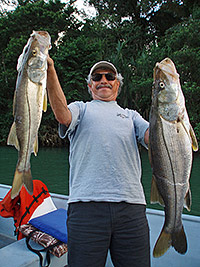 Rio Parismina, Costa Rica – A Fisherman’s Paradise Sportsmen are always searching for new fishing adventures. Rio Parismina Lodge offers anglers an opportunity to fulfill their dreams at a price that is affordable.
Rio Parismina, Costa Rica – A Fisherman’s Paradise Sportsmen are always searching for new fishing adventures. Rio Parismina Lodge offers anglers an opportunity to fulfill their dreams at a price that is affordable.
Sportsmen are always searching for new fishing adventures. Rio Parismina Lodge offers anglers an opportunity to fulfill their dreams at a price that is affordable.
It is here on the Caribbean coast of Costa Rica, that enormous schools of marauding Tarpon search to satisfy their endless appetite. Casting a plug or fly into a school of feeding Tarpon is just the start of one of the greatest experiences an angler can have. Perhaps no other fish will take a lure so softly and then explode into wild, acrobatic leaps to throw the lure.
The Parismina River is the site of four world-record Snook. Casting into the surf at the mouth of the Parismina River, you might spot Tarpon rolling or catch glimpses of giant Snook as they frantically chase after baitfish.
Not only will you find a shot at world-class Tarpon and Snook action, but also offered is the option of fishing a few miles offshore. Here you may catch Snapper, Wahoo, Jack Crevalle, King Mackerel and Tuna.
The seemingly endless network of rivers, streams and lagoons also offer the angler a wondrous and exciting challenge. These jungle backwaters are filled with exotic river fish waiting to ambush your offering. Fish with names like Machaca, Mojara, Guapote as well as Mangrove Snapper, four different species of Snook, and Tarpon call this rainforest their home.
Much of the freshwater fishing is done within the boundary of the Tortuguero National Park, affording you the opportunity to enjoy the rainforest, still untouched by man.
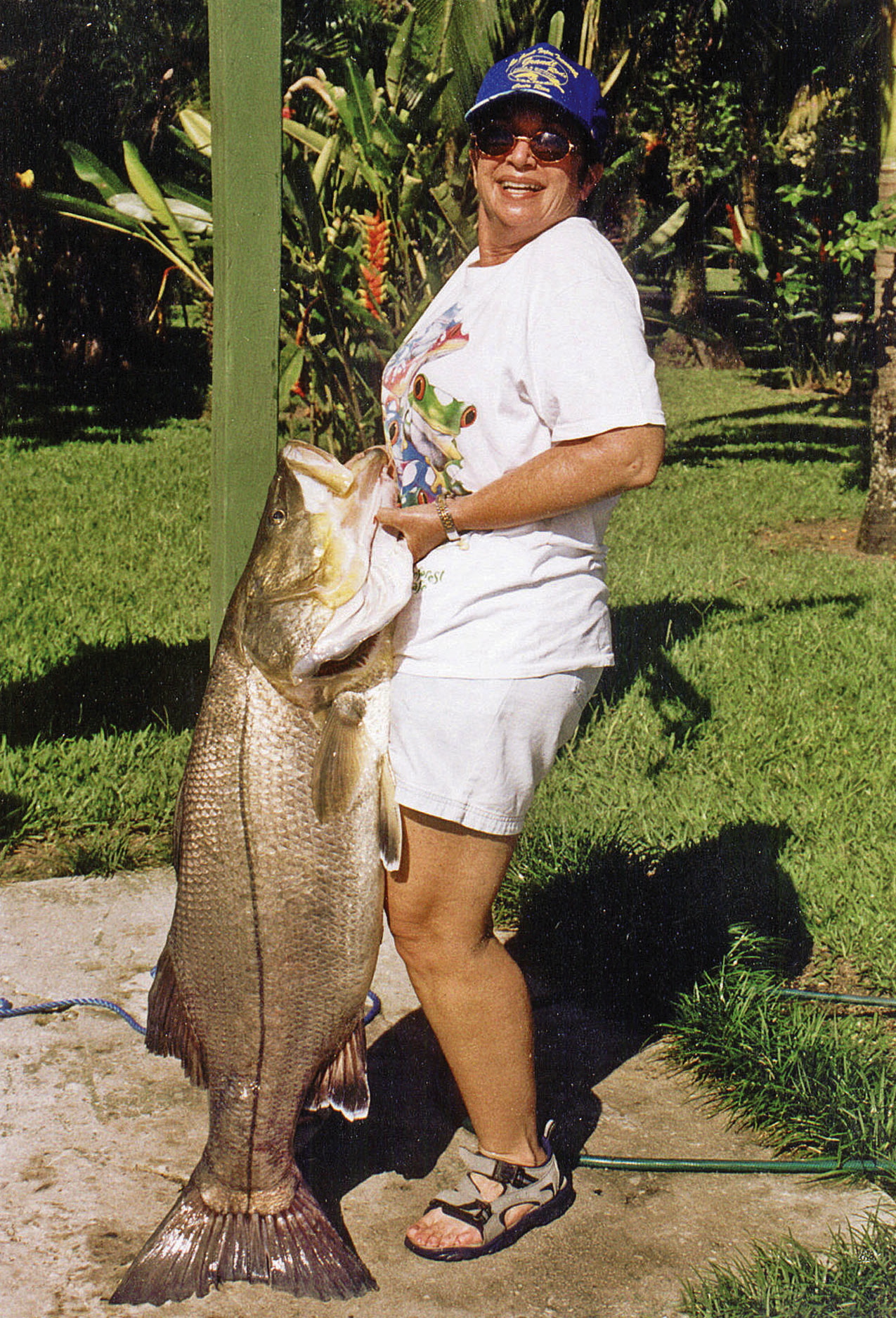
Rio Parismina Lodge the BEST place in the world to catch a world- record Snook! Rio Parismina Lodge has four IGFA world-record Snook.
Men’s 12 lb line class, 43 lbs. 8 oz., caught by James Snyder
Men’s 16 lb line class, 45 lbs. 8 oz., caught by Humberto William Smith
Men’s all tackle line class, 53 lbs. 10oz., caught by Gilbert Ponzi. This is currently the largest Atlantic Snook to have ever been caught on a
rod and reel.
Women’s 20 lb line class, 49 lbs., caught by Judy Heidt (photo above)
If you’re looking to break any of these IGFA current world records, you can’t find a better place than the home of the largest Atlantic Snook in the world. Call today and book your chance at catching a new world-record Snook!
Tarpon on Fly:
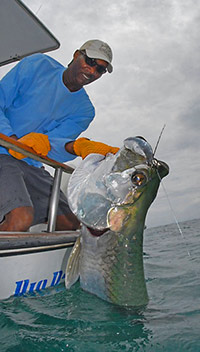 The bottom, near shore, is gently sloping sand and mostly featureless. The Tarpon can be found anywhere from the backwaters near the surf line to well over 160-foot depth with 60-foot depth most common. For these reasons we recommend that you consider 12 or heavier anti-reverse reels with matched weight, 9′ or 10′ rods with fighting butt extensions. Your reel should be loaded with at least 200 yards of 30 lb. backing. You will need various sinking tip lines to get your fly down into the feeding zone. The shock leader should be 80 to 100 lb. monofilament and your flies should be 3/0 to 6/0 hook size.
The bottom, near shore, is gently sloping sand and mostly featureless. The Tarpon can be found anywhere from the backwaters near the surf line to well over 160-foot depth with 60-foot depth most common. For these reasons we recommend that you consider 12 or heavier anti-reverse reels with matched weight, 9′ or 10′ rods with fighting butt extensions. Your reel should be loaded with at least 200 yards of 30 lb. backing. You will need various sinking tip lines to get your fly down into the feeding zone. The shock leader should be 80 to 100 lb. monofilament and your flies should be 3/0 to 6/0 hook size.
Casting Lures for Tarpon:
Recommended is a reel like the Abu-Garcia Ambassadeur 7000C, or something comparable, loaded with at least 200 yards of 20 lb. test mono or 30 lb. braid. Leaders should be 80 to 100 lb. monofilament. A 7′ casting rod with a long handle works well. The rod should be able to cast 2 oz. lures or a little heavier. The rod should be stiff enough in the backbone to set the hook hard or walk the fish around the boat but have a soft enough tip to finesse a wild fish for an extended time.
Spinning tackle requirements are much the same as for baitcasting gear. In either case, a reel with a smooth drag system and a rod with a nice stiff lower section helps to handle these fish. Don’t hesitate to try out your own lure selections. One never knows what might be irresistible to these big fish.
Fishing for Snook:
Snook can be found in the surf or in the rivers and lagoons. The gear required for Snook is a little lighter than for Tarpon. A shock leader of 40 to 60 lb. test is a good choice. A reel with a good drag system filled with 100 to 150 yards of 12 to 17 lb. test line fitted to a 6 and 1/2 foot or 7 foot rod is recommended. For lures, consider 1/2 to 3/4 oz. Rapalas, 3/4 to 1 oz. Bucktail Jigs, Mirrolures and Top Water plugs.
In the Rivers and Lagoons:
The freshwater fishing requires very accurate casting skills. The further back in the jungle you and your guide go, the more challenging it becomes to place your casts well and the more the fight leans to the fish’s favor. A 7-weight fly rod is a good choice for Snook, Machaca and Guapote. For smaller fish like the Mojara and Mangrove Snapper, a 4-weight rod is sufficient. Floating line with tapered leaders and popping bugs work nicely.
Lightweight casting or spinning reels with 8 to 10 lb. test line fitted to rods 5′ to 6′ in length are best. Deep into the jungle backwaters, room to swing a rod is at a premium, so consider a shorter rod than what you might otherwise prefer. Small topwater plugs that chug, pop and create a lot of commotion as well as small spinner baits have been most successful in the rivers.
Extra Cost:
Any clothing, lures or leaders you wish to purchase from Rio Parismina’s tackle shop will be put on a tackle bill. Any terminal tackle that you might lose will be an additonal charge as well as any items of a personal nature that you might want to purchase in the gift shop: T-shirts, suntan lotion etc. Tips to guides and lodge staff as well as a $25 fishing license are not included in our prices.

